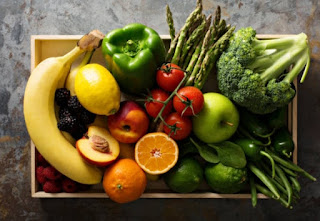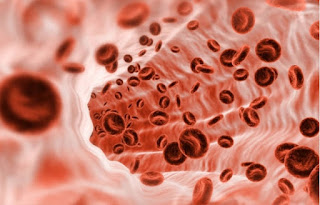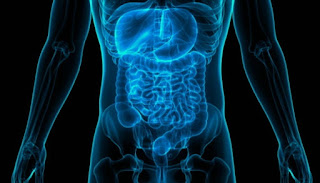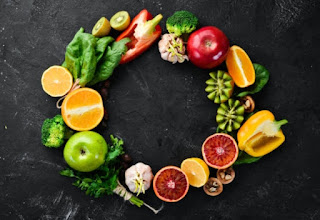Fiber provides a feeling of fullness, is good for bowel movements and supports the immune system. Yet most people eat too little fiber. It is advised to eat about 30 to 40 grams of fiber per day, but many people do not even get 20 grams of fiber per day.
Eating enough fiber is especially important in combination with a low-carbohydrate diet. In this article we explain what fiber is, why it is healthy and important within the low-carbohydrate diet.
What Are Fibers And Why This Important:
Fibers are plant particles in food that are not digested by the body. They belong to the carbohydrate category, but you do not have to avoid fiber within the low-carb diet. On the contrary, fiber is very healthy for your body and without fiber your intestines will become completely clogged. Although fibers are carbohydrates, you do not have to avoid them within this diet, because there are different types of carbohydrates. Fibers are special carbohydrates, they are processed differently by your body. Where normal carbohydrates are digested and absorbed to enter the blood as glucose. Fiber is not digested and converted to glucose. Most fiber is insoluble fiber. This means that they are not or only partially digested. They are therefore not real nutrients that are absorbed by the body, but they do have a function. They serve as food for the bacteria in the intestines and are therefore indispensable for a healthy gastrointestinal system. They also keep your intestines clean and absorb moisture during digestion. This keeps you feeling full longer and fiber can help you lose weight. you are less hungry again. Dietary fiber is the collective name for various types of fiber that belong to carbohydrates and cannot be (completely) digested in the small intestine. Each type of fiber has a different function in our body. When you get too little fiber, this causes constipation, or blockages in the intestines. In the long term, this can even lead to serious health problems and illnesses such as colon cancer and digestive disorders. When you start eating more fiber than you are used to, it is very important that you get enough fluids. Fibers absorb moisture from your body, so that you can lose more water than usual without noticing. Therefore, drink at least two liters of water a day, otherwise fiber can have the opposite effect and you can develop intestinal problems such as flatulence, diarrhea or constipation. So make sure you drink enough every day!
Soluble Fiber And Insoluble Fiber:
Soluble Fiber:
The soluble fiber is broken down by the bacteria in the large intestine and serves as food for the good bacteria in the intestines. Your intestines contain all kinds of bacteria and for a healthy intestinal flora it is important that there is a good ratio between good and bad bacteria. When the bad bacteria prevail, problems can arise. When you eat too little fiber, there is no food for the good bacteria and they can get out of balance. In addition, soluble fiber stimulates the growth of good bacteria in the intestines, so that fiber supports your immune system. Gases are also released in the intestines through the soluble fibers and these gases ensure smooth stools and reduce the risk of blockages. Soluble fibers can be found in: Vegetables (including broccoli, chicory, leek and carrots) Oatmeal, bran Fruit Legumes.
Insoluble Fibres:
The insoluble fibers are not broken down in the intestines, but remain intact. Hence the name insoluble fiber. Now you may be thinking, but what is the function of these fibers? These fibers take moisture and junk from your intestines, because they absorb moisture, making them act like a kind of sponge. Your gut is very ribbed inside. This can leave leftovers. The insoluble fiber cleans your intestines a bit and ensures that the stool volume increases and remains soft and supple. Fiber is therefore very important for good bowel movements.
Insoluble Fibers Can be Found in:
Vegetables (including cucumber, zucchini, carrots, tomatoes, celery) Nuts, seeds & kernels Oatmeal, bran Sweet potatoe Whole grain products (brown rice, quinoa, buckwheat, rye) To experience the health benefits of fiber is It is important that you consume less sugar. Sugar acts as food for the bad bacteria, allowing them to grow. This can create an imbalance between the good and bad bacteria in the gut. It will be difficult to improve your gut if you continue to eat too much sugar.
Fiber Provides Satiety:
Several studies have shown that people who eat enough fiber have a lower average weight and have less body fat than people who eat low fiber. This has several causes, but the main reason is that fiber-rich food ensures a longer satiety. As a result, you are less hungry again and you end up eating less. It is therefore advisable to eat more fiber when you want to lose weight, to avoid craving something sweet or other snacks in between.
Fiber Has an Influence on The:
Blood Sugar Level:
Soluble fiber helps to break down complex carbohydrates, they also reduce the absorption of sugar, so that sugar (glucose) enters the blood more gradually. This keeps your blood sugar level more stable. A stable blood sugar level ensures that you have sufficient energy and are less likely to have a craving for sweet things. Soluble fiber helps to break down complex carbohydrates, also lowers the absorption of sugar, so that sugar (glucose) enters the blood more gradually.
Fiber is Essential in The Low Carbohydrate Diet:
You really need fiber in the low-carbohydrate diet. Some people worry that by eating low-carbohydrates, they are not getting enough fiber. It can be a little more difficult to get enough fiber, so it is all the more important that you pay attention to your daily fiber intake. Since you're cutting grains from your diet and you can't eat unlimited fruits, you'll need to get fiber from other sources. Read on to find out which products are the best to eat if you follow the low-carbohydrate diet and want to get enough fiber.
Fiber Ensures Better Bowel Function And Health:
When you get enough fiber, this ensures better bowel function and fiber protects against heart disease. Dietary fiber plays a very important role in digestion. This already starts in the mouth, where it stimulates the chewing process and ensures extra saliva production. Fibers are also good for your teeth, because they have an abrasive effect that prevents plaque. Fiber ensures slower digestion and increases in volume, so that you stay satiated longer and eat less quickly. Fiber can therefore help you lose weight and eat less. This goes just as well for a tasty soup, delicious coffee or crispy breakfast cereals. You just cobble it together yourself and voila the number of carbohydrates and sugars is reduced. It not only made it healthier, making it more likely to meet healthyfood, but it also has a beneficial effect on the taste of a dish. It gives a kick because you are guaranteed to feel like a real kitchen prince or princess.
What do Fibers Contain:
Fibers come from plant cell walls. The main sources of fiber are vegetables, fruit, potatoes, bread, grains, legumes and nuts. When you choose a processed variant, such as white bread or white rice, a large part of the fiber is lost. This is because they are ground during the process and all membranes (which mainly contain the fibers) are removed. We call this the refined carbohydrates. These are processed products that are an unhealthier choice.
Whole-Grain Products:
To get enough fiber, it is therefore better to choose whole-grain products, such as whole-wheat bread, whole-wheat pasta and brown rice. And as you have read, fibers come from plants, so grains, legumes and vegetables also contain a lot of fiber. However, when you eat low-carb, not all of these foods are allowed if you want to lose weight. Fortunately, there are also foods that are low in carbohydrates and high in fiber, such as various vegetables. Nowadays, there are also a lot of products that have added fiber, but vegetables and in moderation legumes and fruits remain the main sources of fiber in the low-carbohydrate diet.
Vegetables Rich in Fiber:
Unfortunately, vegetables that contain the most fiber are also high in carbohydrates, such as carrots or pumpkin for example. Fortunately, there are also vegetables that are low in carbohydrates and still contain a fair amount of fiber. Think, for example, of leafy vegetables, which contain almost 2 grams of fiber per 100 grams. Avocados also contain a lot of fiber per 100 grams, 2 grams of fiber and also contain a lot of healthy fats, artichoke even contains 5 grams of fiber per 100 grams. Artichoke is a good snack, delicious with a dipping sauce. All you have to do is cook the artichoke for 30 to 40 minutes and then you can eat the insides of the leaves with a homemade dipping sauce from our low carb recipe book.
Low-Carb And High-Fibre:
Most products that contain a lot of fiber are also high in carbohydrates. As a result, it can seem difficult at first to get enough fiber. The daily recommendation is 30 to 40 grams of fiber per day. Almost every Dutch person has been eating too little fiber for years, but if you follow a low-carbohydrate diet you have to pay extra attention to your fiber intake. When you eat low carbohydrates in the right way, it is not a problem to get enough fiber. If you still find it difficult to get enough fiber or do you not know whether you are getting enough fiber? Then read through these tips.
Low-Carbohydrate Products That Are High in Fiber:
Psyllium husk: 78 grams of fiber per 100 grams of sylium husk Chia seed: 35 grams of fiber per 100 grams of chia seeds Flax seeds: 27 grams of fiber per 100 grams of linseed Pumpkin seeds: 18 grams of fiber per 100 grams of pumpkin seeds Chickpeas: 15 grams of fiber per 100 grams chickpeas Soybeans: 13 grams fiber per 100 grams soybeans Sesame seeds: 12 grams fiber per 100 grams sesame seeds Almonds: 12 grams fiber per 100 grams almonds Dark chocolate (70-99%): 11 grams fiber per 100 grams dark chocolate Macadamia nuts: 10 grams of fiber per 100 grams of macadamia nuts Sunflower seeds: 9 grams of fiber per 100 grams of sunflower seeds Currants: 8 grams of fiber per 100 grams of currants Red currants: 8 grams of fiber per 100 grams of red currants Blueberry: 8 grams of fiber per 100 grams of blueberries Avocado: 7 grams of fiber per 100 grams of avocado Peanuts: 6 grams of fiber per 100 grams of peanuts Raspberries: 6 grams of fiber per 100 grams of raspberries Hazelnuts: 5 grams of fiber per 100 grams of hazelnuts Pecans: 5 grams of fiber per 100 grams of pecans Artichoke: 5 grams of fiber per 100 grams of artichoke Tempeh: 5 grams of fiber per 100 grams of tempeh Blackberries: 4 grams of fiber per 100 grams of blackberries Brussels sprouts: 4 grams of fiber per 100 grams of Brussels sprouts Broad beans: 4 grams of fiber per 100 grams of broad beans Black currants: 4 grams of fiber per 100 grams of blackcurrants Walnuts: 4 grams of fiber per 100 grams of walnuts Kiwi: 3 grams of fiber per 100 grams of kiwi Lamb's lettuce: 3 grams of fiber per 100 grams of lamb's lettuce Broccoli: 3 grams of fiber per 100 grams of broccoli Quinoa : 3 grams of fiber per 100 grams of quinoa Strawberries: 2 grams of fiber per 100 grams of strawberries Cheese: 1 gram of fiber per 100 grams of cheese
Tips to Eat More Fiber:
Eat Some Vegetables or Raw Vegetables With Every Meal:
Within the low-carbohydrate diet, eating enough vegetables is very important. In addition to providing vitamins and minerals, they also provide a lot of fiber. When you start eating fewer carbohydrates, you will probably automatically eat more vegetables. Try to get some vegetables with every meal. Think of cucumber (with skin), avocado, tomatoes, celery, lettuce or radishes for example. A well-filled meal salad will also contain a lot of fiber.
Eat Some Nuts, Seeds or Kernels Every Day:
Nuts, seeds and kernels are important sources of fiber, in addition to vegetables, these foods provide the most fiber in the low-carbohydrate diet. Almonds, walnuts, hazelnuts, chia seeds and flax seeds contain a lot of fiber and also healthy fats. Delicious at breakfast in some yogurt or bake something with it. A handful of loose nuts is also a good snack. Make sure not to eat too many nuts. Nuts contain a lot of calories, so don't eat too much of them if you want to lose weight, but don't avoid them because they are super healthy and full of nutrients.
Eat More Fruit as a Whole:
Fruit cannot be eaten indefinitely within the low-carbohydrate diet. Fruit also contains a lot of carbohydrates, but because fruit also contains many healthy nutrients, you should certainly not avoid fruit. Choose to eat fruit in its pure form, so not in smoothies or juices, because then you will quickly get several pieces of fruit and less fiber. Red fruit in particular is a good choice within the low-carbohydrate diet. Red fruit is low in sugars and high in fiber. Think strawberries, blackberries, raspberries and currants. Eat where can fruit (and vegetables) with peel because they contain the most fiber.
Drink a Green Smoothie Every Day:
Drinking a green smoothie is ideal for getting fiber and enough vegetables on a daily basis. The first green smoothie may take some getting used to, but you will quickly get used to the taste. You can also add some extra fruit first so that it has a slightly sweeter taste. Make a green smoothie from leafy vegetables, a fiber-rich piece of fruit, water and possibly some seeds for extra fiber.
Eat More Legumes:
Legumes contain a lot of carbohydrates, luckily they are complex carbohydrates. Still, you can't eat too many legumes if you're on a low-carb diet, but it's fine to eat occasionally with a meal or snack in between. You can easily add legumes to a meal. Legumes are also rich in proteins and vitamins and minerals. You could also occasionally replace a piece of meat with a serving of legumes. Or make a healthy hummus dip from chickpeas.
Drink Enough Water Every Day:
When you start eating more fiber than you are used to, it is very important that you get enough fluids. Fibers absorb moisture from your body, so that you can lose more water than usual without noticing. Therefore, drink at least two liters of water a day, otherwise fiber can have the opposite effect and you can develop intestinal problems such as flatulence, diarrhea or constipation.
Eat Less Refined Sugar:
To experience the health benefits of fiber, it is important that you consume less sugar. Sugar acts as food for the bad bacteria, allowing them to grow. This can create an imbalance between the good and bad bacteria in the gut. It will be difficult to improve your gut if you continue to eat too much sugar. Eat less refined sugar To experience the health benefits of fiber, it is important that you consume less sugar. Sugar acts as food for the bad bacteria, allowing them to grow. This can create an imbalance between the good and bad bacteria in the gut. It will be difficult to improve your gut if you continue to eat too much sugar.
Vegetables Wealthy in Fiber:
Unfortunately, vegetables that contain the foremost fiber also are high in carbohydrates, like carrots or pumpkin for instance. as luck would have it, there square measure|are} vegetables that are low in carbohydrates and still contain a good quantity of fiber. Think, for instance, of unifoliate vegetables, that contain virtually a pair of grams of fiber per a hundred grams. Avocados additionally contain a great deal of fiber per a hundred grams, a pair of grams of fiber and additionally contain a great deal of healthy fats, artichoke even contains five grams of fiber per a hundred grams. Artichoke may be a smart snack, delicious with a dipping sauce. All you've got to try and do is cook the artichoke for thirty to forty minutes then you'll be able to eat the insides of the leaves with a home-baked dipping sauce from our low carb formula book.
Low-carb And High-Fibre:
Most merchandise that contain a great deal of fiber also are high in carbohydrates. As a result, it will appear tough initially to induce enough fiber. The daily recommendation is thirty to forty grams of fiber per day. virtually each Dutch person has been consumption insufficient fiber for years, however if you follow a low-carbohydrate diet you've got to pay additional attention to your fiber intake. after you eat low carbohydrates within the right means, it's not a drag to induce enough fiber. If you continue to realize it tough to induce enough fiber or does one not grasp whether or not you're obtaining enough fiber? Then scan through the following tips.
Low-Carbohydrate Merchandise That Square Measure High in Fiber:
Psyllium husk: seventy eight grams of fiber per a hundred grams of sylium husk Chia seed: thirty five grams of fiber per a hundred grams of chia seeds Flax seeds: twenty seven grams of fiber per a hundred grams of flaxseed Pumpkin seeds: eighteen grams of fiber per a hundred grams of pumpkin seeds Chickpeas: fifteen grams of fiber per a hundred grams chickpeas Soybeans: thirteen grams fiber per a hundred grams soybeans benne seeds: twelve grams fiber per a hundred grams benne seeds Almonds: twelve grams fiber per a hundred grams almonds bittersweet chocolate (70-99%): eleven grams fiber per a hundred grams bittersweet chocolate macadamia tree whacky: ten grams of fiber per a hundred grams of macadamia tree nuts flower seeds: nine grams of fiber per a hundred grams of flower seeds Currants: eight grams of fiber per a hundred grams of currants Red currants: eight grams of fiber per a hundred grams of red currants Blueberry: eight grams of fiber per a hundred grams of blueberries Avocado: seven grams of fiber per a hundred grams of avocado Peanuts: half dozen grams of fiber per a hundred grams of peanuts Raspberries: half dozen grams of fiber per a hundred grams of raspberries Hazelnuts: five grams of fiber per a hundred grams of hazelnuts Pecans: five grams of fiber per a hundred grams of pecans Artichoke: five grams of fiber per a hundred grams of artichoke Tempeh: five grams of fiber per a hundred grams of tempeh Blackberries: four grams of fiber per a hundred grams of blackberries capital of Belgium sprouts: four grams of fiber per a hundred grams of capital of Belgium sprouts Broad beans: four grams of fiber per a hundred grams of broad beans Black currants: four grams of fiber per a hundred grams of blackcurrants Walnuts: four grams of fiber per a hundred grams of walnuts Kiwi: three grams of fiber per a hundred grams of kiwi Lamb's lettuce: three grams of fiber per a hundred grams of common corn salad Broccoli: three grams of fiber per a hundred grams of broccoli Quinoa : three grams of fiber per a hundred grams of quinoa Strawberries: a pair of grams of fiber per a hundred grams of strawberries Cheese: one gram of fiber per a hundred grams of cheese
Tips to Eat Additional Fiber:
Eat Some Vegetables or Raw Vegetables With Each Meal:
Within the low-carbohydrate diet, consumption enough vegetables is incredibly necessary. additionally to providing vitamins and minerals, they additionally offer a great deal of fiber. after you begin consumption fewer carbohydrates, you'll most likely mechanically eat additional vegetables. try and get some vegetables with each meal. consider cucumber (with skin), avocado, tomatoes, celery, lettuce or radishes for instance. A well-filled meal dish also will contain a great deal of fiber.
Eat Some Whacky, Seeds or Kernels Each Day:
Nuts, seeds and kernels square measure necessary sources of fiber, additionally to vegetables, these foods offer the foremost fiber within the low-carbohydrate diet. Almonds, walnuts, hazelnuts, chia seeds and flax seeds contain a great deal of fiber and additionally healthy fats. Delicious at breakfast in some yoghurt or bake one thing with it. some of loose whacky is additionally an honest snack. confirm to not eat too several whacky. whacky contain a great deal of calories, therefore do not eat an excessive amount of of them if you wish to thin, however do not avoid them as a result of they're super healthy and packed with nutrients!
Eat Additional Fruit as a Whole:
Fruit can not be consumed indefinitely at intervals the low-carbohydrate diet. Fruit additionally contains a great deal of carbohydrates, however as a result of fruit additionally contains several healthy nutrients, you must under no circumstances avoid fruit. opt to eat fruit in its pure kind, therefore not in smoothies or juices, as a result of then you'll quickly get many items of fruit and fewer fiber. Red fruit specially may be a good selection at intervals the low-carbohydrate diet. Red fruit is low in sugars and high in fiber. suppose strawberries, blackberries, raspberries and currants. Eat wherever will fruit (and vegetables) with peel as a result of they contain the foremost fiber.
Drink a Inexperienced Smoothie Each Day:
Drinking a inexperienced smoothie is good for obtaining fiber and enough vegetables on a day to day. the primary inexperienced smoothie could take some obtaining accustomed, however you'll quickly get accustomed the style. you'll be able to additionally add some additional fruit 1st so it's a rather sweeter style. build a inexperienced smoothie from unifoliate vegetables, a fiber-rich piece of fruit, water and probably some seeds for additional fiber.
Eat Additional Legumes:
Legumes contain a great deal of carbohydrates, fortuitously they're complicated carbohydrates. Still, you cannot eat too several legumes if you are on a low-carb diet, however it's fine to eat often with a meal or snack in between. you'll be able to simply add legumes to a meal. Legumes also are wealthy in proteins and vitamins and minerals. you may additionally often replace a chunk of meat with a serving of legumes. Or build a healthy hommos dip from chickpeas. Drink enough water each day: after you begin consumption additional fiber than you're accustomed, it's vital that you just get enough fluids. Fibers absorb wetness from your body, so you'll be able to lose additional water than usual while not noticing. Therefore, drink a minimum of 2 liters of water daily, otherwise fiber will have the other result and you'll be able to develop enteric issues like flatulence, looseness of the bowels or constipation. therefore confirm you drink enough each day!
Eat Less Refined Sugar:
To expertise the health advantages of fiber, it's necessary that you just consume less sugar. Sugar acts as food for the unhealthy bacterium, permitting them to grow. this may produce associate degree imbalance between the nice and unhealthy bacterium within the gut. it'll be tough to enhance your gut if you still eat an excessive amount of sugar. Eat less sweetener To expertise the health advantages of fiber, it's necessary that you just consume less sugar. Sugar acts as food for the unhealthy bacterium, permitting them to grow. this may produce associate degree imbalance between the nice and unhealthy bacterium within the gut. it'll be tough to enhance your gut if you still eat an excessive amount of sugar.













Post a Comment